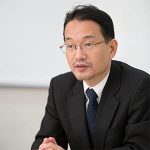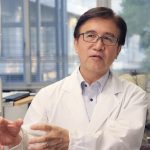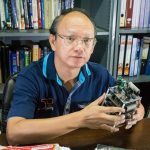Keynote Speakers

Professor Dr. Mengu CHO
Kyushu Institute of Technology
Lean Satellite: Delivering Satellite Values With Low Cost and Short Time
Traditionally building a satellite has required a long time and a high cost. It is because failure was not an option and risks were not tolerated. In recent years, however, a new way of making and using satellites has emerged. After all, the purpose of building a satellite is not to build a satellite. It is to deliver the value of the satellite to the stakeholder. Lean satellites utilize non-traditional, risk-taking development and management approaches to provide the value of satellite to the customer, the users, and the stakeholders at low-cost and in short time. Lean satellites accept risks. Therefore, each satellite may fail. But after implementing the lessons to the next satellite and launching it quickly, the overall program becomes reliable enough to meet the stakeholder demand. In order to launch the next one quickly, the satellite size becomes small to lessen the effect of high launch cost. Many so-called small/micro/nano/pico/femto satellites fall into the category of lean satellites. In this presentation, the concept, the current status, and the future of lean satellites will be introduced.

Professor Dr. Teruhisa OHNO
Kyushu Institute of Technology
Atomically Dispersed Metal Ions on Carbon Nitride for the Artificial Photosynthesis of Hydrogen Peroxide
Co-Author: Dr. Zhenyuan Teng, University of Hong Kong
Artificial photosynthesis offers a promising strategy to produce hydrogen peroxide (H2O2). Here we show a robust metal ions single-atom photocatalyst (Sb-SAPC, single-Sb-atom dispersed on carbon nitride) for the synthesis of H2O2 in a simple water and oxygen mixture under visible light irradiation. An apparent quantum yield of 17.6% at 420 nm together with a solar-to-chemical conversion efficiency of 0.61% for H2O2 synthesis was achieved. Based on time-dependent density function theory calculations, isotopic experiments and advanced spectroscopic characterizations, the outstanding photocatalytic performance is ascribed to the significantly promoted two-electron ORR by forming μ-peroxide at the Sb sites and highly concentrated holes at the neighbouring N atoms. The in-situ generated O2 via water oxidation is rapidly consumed by ORR, leading to boosted overall reaction kinetics.

Professor Dr. Suwat Kuntanapreeda
King Mongkut’s University of Technology North Bangkok
Nonlinear Control: A Brief Overview and Current Developments
Nonlinear control is one of among the most fascinating and challenging fields of research and should not be ignored since most real systems are nonlinear. Even when implemented with linear systems, nonlinear controllers can perform better than linear ones. This talk first provides simple examples to highlight the advantages of nonlinear controllers. Then, a brief overview of Lyapunov-based nonlinear control is given. After that, some of our past works that illustrated the effectiveness of nonlinear control are provided. Finally, I will give a brief overview of our current works, indicating a potential direction for future works, and conclude the talk with the intention of inspiring young researchers to pursue their works in this field.